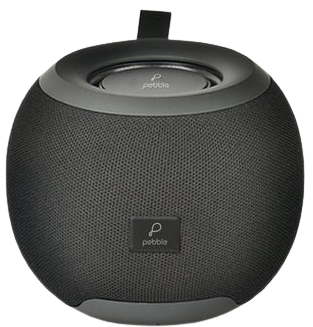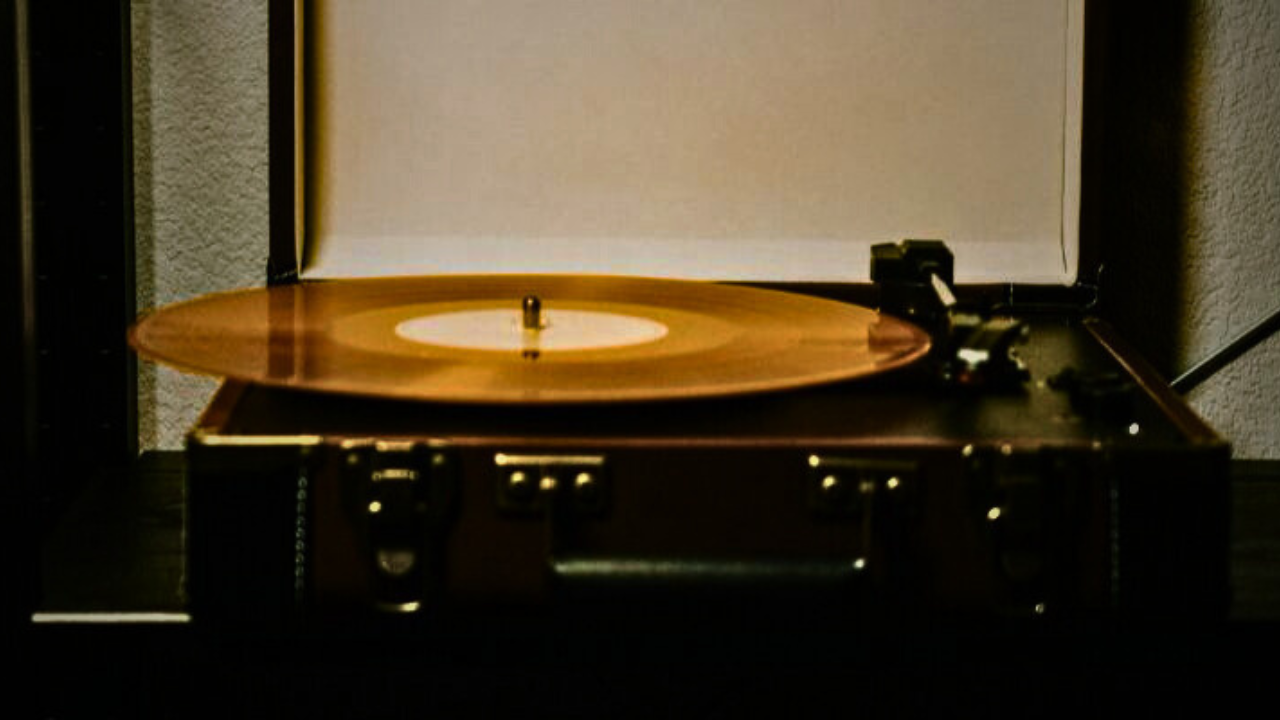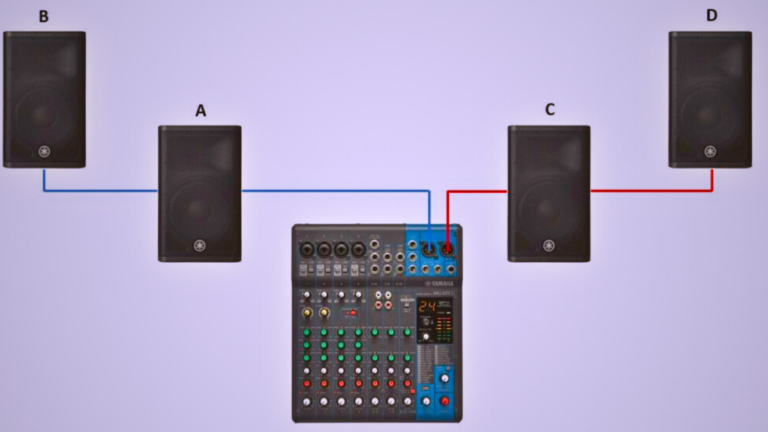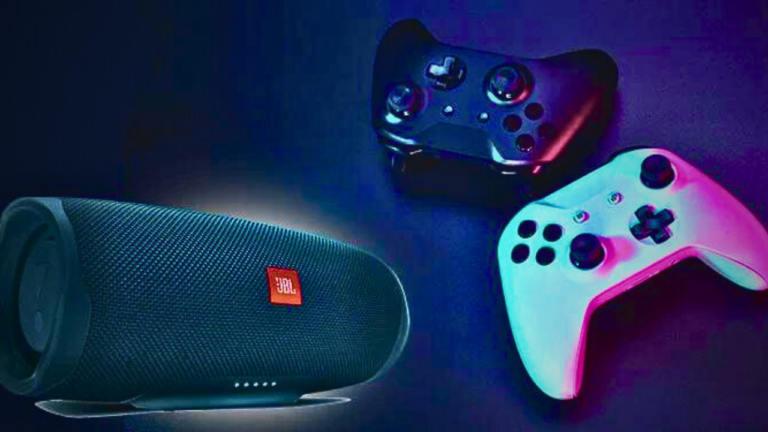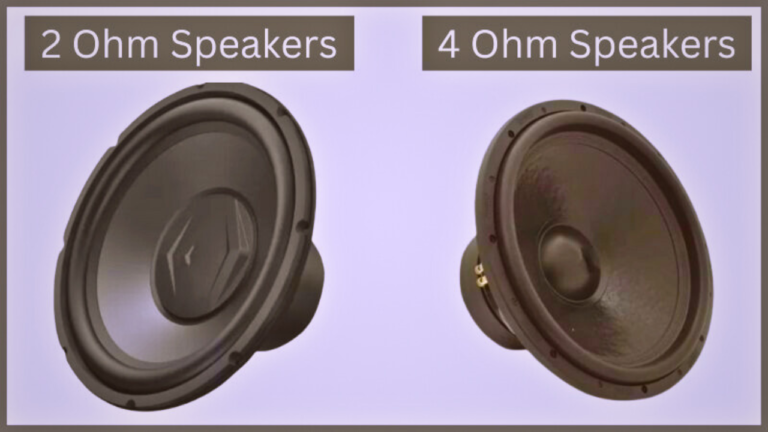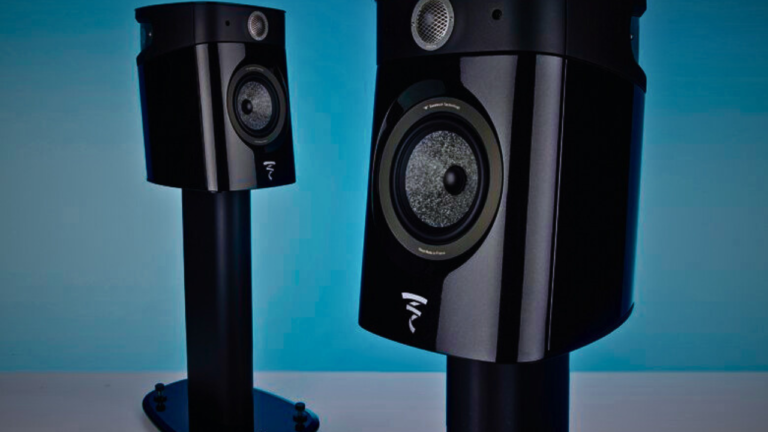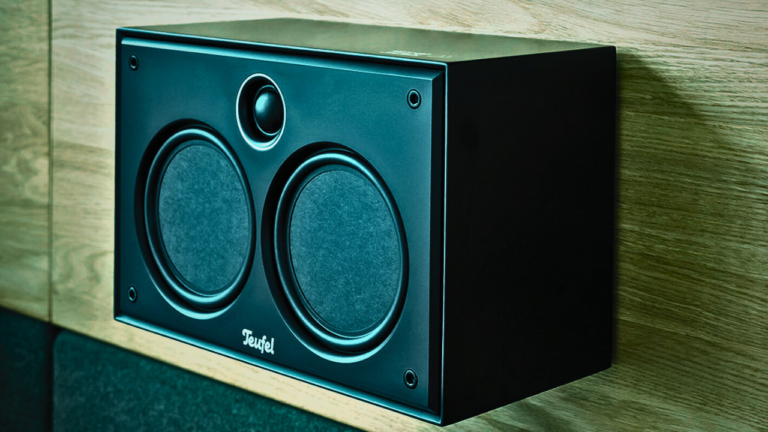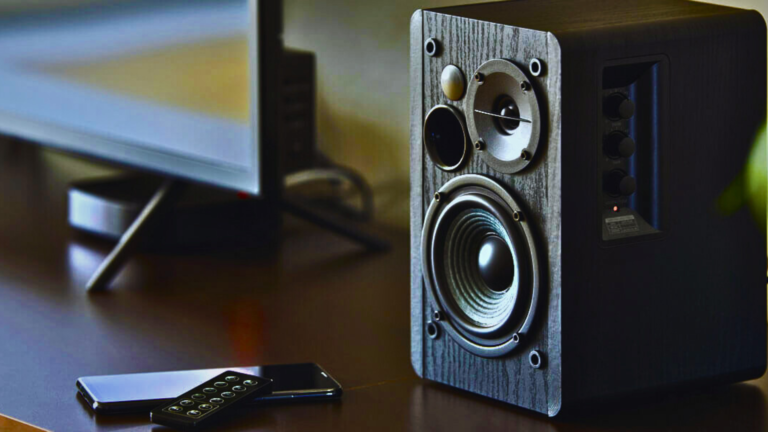Does A Record Player Need Speakers?
Ever found yourself captivated by the melodic charm of a vinyl record and wondered if a record player really needs speakers to deliver the fervor it holds? Well, you’ve come to the right place, my fellow audiophile!
In order to provide a comprehensive answer, let’s first discuss the fundamental structure of a record player and how it manipulates vinyl records to produce sound.
At its core, every record player consists of four basic components: the turntable that spins the vinyl, the tonearm that holds the stylus, the stylus or needle that tracks the grooves of the records, and the phono preamplifier that amplifies the signals from the stylus.
These signals, unfortunately, are not powerful enough to be directly fed into speakers, necessitating an amplifier. But is an amplifier always needed? Or are there alternatives that bypass the need for external speakers while delivering good sound quality? Let’s dive in and figure things out.
What is a record player, and how does it work?
Think of a record player as a time machine that whisks you back to the golden age of music. A veritable mechanical marvel, the record player’s core function is to read and interpret the audio information inscribed on the tightly wound grooves of a vinyl record, converting them into sounds that fill the room. Listen closely, folks, as we unspool the workings of this classic apparatus.
First, you have the turntable platform, the grand stage where the vinyl record spins. It works in harmony with the platter—the circular disc—ensuring that the record rotates at the correct speed (usually 33, 45, or 78 revolutions per minute).
At the heart of the record player is the tonearm, a pivoting line that gently rests on the spinning record. Its treasured cargo, the cartridge, is fixed at the end closest to the record. Within this tiny box lies the stylus, often referred to as the needle, a tiny diamond or sapphire tip that reads the record.
This is where the magic happens! The stylus voyages over the record, tracing the contours of the grooves. As it oscillates, it creates an electrical signal that matches the pattern of the record’s grooves—your favorite tunes. Suppose it’s The Beatles or Aretha Franklin; the grooves bring the music alive!
However, the output from the stylus is weak and needs a boost. Enter the preamp. This piece of tech boosts the signal’s voltage to a level that typical audio equipment—yes, the speakers—can handle. From there, the signal travels to the amplifier, which fortifies it further, making it strong enough to drive your speakers and let the music flow!
“Every sound that’s ever been made in music can be reproduced on analog equipment. There’s a finite limit to what can be recorded and replayed digitally.” – Neil Young
Wait, speakers? Do you have to have those? Don’t worry; we’ll dive into those details in the sections to come.
What are the main components of a record player?
Let’s take a stroll through the world of vinyl and explore the fascinating machine that takes you on a nostalgic audio journey every time you set the needle down. In essence, a record player is nothing but a combination of cleverly designed, interworking components. These include:
- Turntable Platter: This component of your record player is flat, circular, and rotates the vinyl record. The speed at which it spins is crucial, as different records require different speeds to play accurately.
- Tonearm: This slender arm holds the cartridge and stylus and swings across the record as it plays. The arm has a counterweight to balance it out, enabling the stylus to gently touch the vinyl without scratching it.
- Stylus: This component of the player is effectively a needle made of diamond or sapphire. It maneuvers its way through the grooves of your vinyl and reads the music information.
- Cartridge: Ever notice the box at the end of your tonearm? That’s the cartridge, which holds the stylus and translates its vibrations into an electrical signal. This is your music, ready to be amplified and listened to!
However, spinning disks and stylus needles are just part of the recipe. A record player also contains some other key elements:
- Amplifier: This gadget augments the cartridge’s initial signal, bringing your music up to a listenable level.
- Preamp: Some record players come with a built-in preamp, which does further amplification. Not all players have this and might need an external preamp for best performance.
- Speakers: And, of course, speakers! They convert the amplified electrical signal into sound waves, so you can enjoy your music. Some record players have this built-in, while others require external speakers.
Put all these elements in harmony, and you have a machine that offers an incredibly unique and intimate music listening experience. As the vinyl spins and the stylus navigates its grooves, each component of the record player has a role to play. The end result? The sweet, warm sounds of your favorite records fill the room.
Do record players require speakers to function?

Record players, also commonly known as turntables, do require speakers to produce audible sound. However, it’s important to clarify that they don’t need speakers to operate or function in the sense of spinning the vinyl and creating an electric audio signal.
The spinning record vibrates the needle, or stylus, which tracks the grooves in the record. This movement is converted into an electrical signal by the cartridge, which then needs to be amplified and converted back into sound waves by some kind of speaker system.
The Complexity of a Record Player Setup:
Think of the process a bit like sending a letter. You can write and address the envelope (that’s the stylus tracking the groove and creating the electrical signal), but the recipient won’t be able to read it unless they open the envelope and take out the letter. Likewise, without speakers, the electrical audio signal stays ‘stuck in the envelope, so to speak.
Modern record players often come with built-in speakers, allowing you to listen to your records without needing to purchase additional equipment. However, these built-in speakers tend to be of subpar quality due to their small size and the compromises made to squeeze them into the player’s cabinet. For a greater audio experience, an external speaker system is highly recommended.
Tying it all together:
So, to sum it up, while a record player can function without speakers, you won’t be able to hear any sound produced from the vinyl record. Just like a radio emitting radio waves, without the proper equipment to decode and amplify these signals, it’s virtually silent. Therefore, to enjoy the rich, full audio experience that vinyl has to offer, a pair of good speakers is a must.
What are the different types of record-player setups?
As technology advanced and sound engineering progressed, multiple record player setups evolved to suit every vinyl enthusiast’s taste. Intricate in their architecture and versatile in output, the specific details of these setups are a symphony of physics, engineering, and love for the classic vinyl sound.
To begin with, it is useful to understand the basic types of setups.
All-In-One Record Players
These are completely autonomous units that include all the parts needed for a record player to operate and produce sound. You’ll find everything, right from the turntable to built-in speakers, in these compact systems. They are user-friendly and portable, making them ideal for beginners or those who enjoy a minimalist aesthetic.
Component Systems
This is a more advanced option where each component of the record player is standalone. In other words, the stereo receiver, turntable, and speakers are all separate entities. These are often favored by audiophiles, as they allow for enhanced customization and improved audio quality. The speakers can be chosen based on your particular preferences, letting you tailor your music experience just how you want it.
The Importance of a Phono Preamp
If you’re considering a component system, it’s important to mention the phono preamp. This component amplifies the sound signal before it reaches the speakers. Some turntables have a built-in preamp, while others don’t. If yours doesn’t, you’ll need to get a separate one. This is another area where you can customize your vinyl sound, as different preamps produce slightly different sound effects.
Audiophiles generally prefer tube preamps for their warm, rich sounds, but solid-state preamps also have a fan base due to their clarity and accuracy.
Why Do Certain Setups Exclude Built-In Speakers?
Finally, you might wonder why some audiophiles don’t prefer record players with built-in speakers. This is largely down to quality. Built-in speakers in an all-in-one player usually don’t match the sound quality of standalone speakers. The smaller size and compact nature of built-in speakers can limit their capacity for producing full, resonant sound. Thus, if audio quality matters to you, consider investing in an exterior speaker system.
How does the sound output of a record player differ with and without speakers?

You might be wondering how the sound output of a record player changes when going from a setup with speakers to one without. Well, let’s break it down for you.
First and foremost, record players are designed to reproduce sound from vinyl records. They do this by converting the grooves in the record into electrical signals, which are then amplified and turned into sound. The role of speakers in all of this is quite critical.
The Role of Speakers in Sound Output
Speakers are the final step in this process. They take the amplified electrical signals from the record player and convert them into sound waves that we can hear. Without speakers, you’re missing this crucial step, so the sound reproduction is incomplete.
But let’s say you have a record player with built-in speakers. In that case, the sound will come directly from the player itself. However, the sound quality and volume will typically be lower than if you have a dedicated set of external speakers. That’s primarily because the built-in speakers on most record players are often of lesser quality to save on production costs and space.
External Speakers vs. No Speakers
If you’re using a record player with no speakers at all, even inbuilt ones, the sound output would be literally non-existent to your ears. That’s because no device is converting the electrical signals into audible sound waves. It’s a bit like having a CD with no CD player to play it—unusual, right?
On the other end, external speakers provide far superior sound quality. They usually come better equipped for amplifying sound without distortion and delivering in-depth audio clarity. So, if sound quality is your priority, a setup with good-quality external speakers is highly recommended.
In summary, while a record player can technically function without speakers, for the enhanced auditory experience that vinyl listening is applauded for, speakers are a vital component. Depending on your preference for sound output, you can opt for in-built speakers, external speakers, or even headphone setups. In any case, a speaker system is key to unlocking the melody hidden within those vinyl grooves.
Conclusion
In conclusion, while it’s technically true that record players do not require external speakers to operate, it’s important to note that they are integral to a richer and more immersive sound experience. The setup of your record player, its components, and the presence or absence of speakers can significantly influence the sonic output.
Hence, while you can play a record without speakers, to fully appreciate the nuances and authenticity of the vinyl sound, coupling the turntable with a good pair of speakers is highly recommended.
Remember, the needle of a turntable produces a natural sound when it tracks the grooves of a record. Yet, without any amplification, this sound will be soft and lacking in robustness. To bring your favorite vinyls to life, to make them sing with all the depth, soul, and dynamism they carry, amplified sound via quality speakers is the key.
Yet, it’s entirely up to you how you choose to immerse yourself in your vinyl experience. You might prefer the simplistic setup of a record player without speakers for a more laid-back or intimate listening session. Or perhaps you’d lean towards a full-scale vinyl setup with top-tier speakers for a full-bodied, room-filling sonic experience. The call is yours.
No matter what you choose, ensure your decision is based on an understanding of the kind of sound output you desire, the space you have available, and, of course, your budget. Not forgetting your love for the authentic vinyl sound, which, regardless of the setup, will always keep you coming back for more.
Read also: What Happens If Speakers Are Out Of Phase?
FAQs
Can a record player work without a speaker?
A record player can operate without a speaker, but to hear the music, it needs either a built-in speaker or external speakers. Without either, the stylus will still follow the grooves on the record, but the sound will not be amplified, making it nearly inaudible.
What is better: a record player with built-in speakers or one without?
Both options have their pros and cons. A record player with built-in speakers is convenient and often less expensive. However, to obtain higher sound quality and volume, vintage record players paired with external, high-quality speakers are generally preferred.
Why do some record players come without built-in speakers?
Record players without built-in speakers are usually designed for those who desire a higher-quality, more customizable sound experience. By giving users the choice of speakers, they can tailor their audio setup to their preferences.
Can headphones replace speakers in terms of a record player’s sound output?
Yes, headphones can be used in place of speakers, but they will also require an amplifier or receiver with a headphone jack to properly boost the signal.
Do all record players come with a phono preamp?
No, not all record players come with a phono preamp. This component is necessary to amplify the record player’s signal to a level that a regular amplifier or receiver can use. Some record players come with built-in preamps, while others require an external one.
What is the role of a phono preamp in a record player’s setup?
The phono preamp boosts the signal from the cartridge and equalizes the sound according to the RIAA curve, which is a standard for vinyl recording. This allows the music to be heard properly through the speakers.
What kind of speakers do I need for a record player?
The kind of speakers you need depends on your audio preferences. Active speakers with built-in amplification can be directly connected to a record player with a built-in preamp. For record players without a preamp, passive speakers can be used, but they will require an external amplifier or receiver.
What other components do I need for a record player setup?
Other than speakers and a phono preamp, you may also need a receiver or amplifier if your speakers are passive or if you want to connect multiple audio sources. A good-quality stylus, turntable mat, and record cleaning equipment are also necessary for maintaining your records and achieving good sound quality.
Does the quality of the record impact the sound output?
Yes, the quality of the vinyl record significantly impacts the sound output. Scratched or poorly maintained records can affect the stylus movement, resulting in poor sound quality.
How do I maintain my record player to ensure good sound quality?
Clean the stylus regularly with a stylus brush and an approved cleaning solution. Keep your records free from dust and in a cool, dry place. Whenever possible, use a record cleaning kit before and after playing each record.

Hey there! I’m Henry Jack, the voice behind speakerrealm.com, your ultimate destination for everything speakers. Whether you’re a seasoned audio enthusiast or just starting to explore the world of sound, you’ve come to the right place.
At Speaker Realm, I dive deep into the realm of speakers, bringing you comprehensive reviews, insightful guides, and the latest trends in the industry. From floor-standing behemoths to compact bookshelf wonders, I cover it all.
I’m passionate about helping you find the perfect speakers to elevate your audio experience. Whether you’re setting up a home theater, upgrading your sound system, or just looking for some quality audio gear, I’ve got you covered.
But Speaker Realm isn’t just about technical specs and performance metrics—it’s also about the art and science of sound. I explore topics like acoustic design, speaker technology, and the impact of audio on our lives.
So whether you’re a casual listener or a hardcore audiophile, join me on this journey through the world of speakers. Let’s turn up the volume and explore the endless possibilities of sound together at speakerrealm.com!
